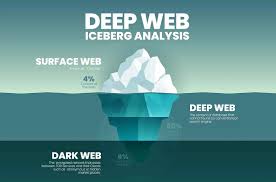Why NetSuite’s Real-Time Dashboards Are a Game-Changer?
Data inspires ideas. Ideas forge growth. NetSuite dashboards transform scattered bits of data into unified views illuminating opportunities. These analytical interfaces contextualize metrics for smarter choices using visualized performance indicators.
However, generic dashboards fail to change behaviors. Tailored designs providing contextual insights in relatable formats influence actions. SuiteRep NetSuite experts have the platform and vertical expertise to create transformative dashboards mapped to your workflow.
This guide examines dashboarding best practices and features accelerating informed decisions.
Prerequisites for Effective Dashboards
Simply dumping data into dashboards fails to improve thinking. Effective instrumentation requires understanding key performance drivers across interdependent departments, teams and systems.
- Map processes from lead to cash, procurement to payment and product to delivery to identify data gaps and workflow priorities.
- Interview business leaders to determine challenges solved through better visibility or new analytical combinations.
- Consolidate data sources into a governed centralized warehouse like NetSuite to ensure accuracy.
- Establish security protocols governing access to sensitive figures.
Armed with an indexing scheme and access controls, dashboards can now highlight critical interrelationships.
Finance and Accounting Dashboards
CFOs demand real-time awareness over financial health with the flexibility to dig deeper into transactional line items. Pre-built accounting dashboards centralize key data flows, while tailored designs focus on cost centers or programs critical for forecasting and compliance.
Common finance dashboards include:
- Cash Flow and Liquidity Management – Enable faster decisions optimizing outlays and receivables with cash factoring visibility.
- Account Reconciliations – Automatically match transactions from billing, procurement and inventory activities to general ledger postings streamlining period-end close.
- Budget vs Actual Reporting – Compare departmental budgets to actual spend and headcount costs for continuous financial tuning.
- A/R Aging Analysis – Improve collections through segmented views into outstanding invoices by customer account over time.
Operations and Inventory Dashboards
Connecting procurement, partners and production with distribution workflows ensures optimal inventory levels and minimizes waste. Granular performance tracking right-sizes capacity while identifying constraints.
Typical operational dashboards:
- Vendor Scorecards – Scorecard vendor quality, pricing and reliability to guide future decisions and contract negotiations.
- Inventory Analysis – Overlay projected safety stock levels onto shelf inventory at multiple distribution centers while factoring in lead times and seasonality.
- Quality Management – Correlate product defect rates with suppliers, batches and test protocols to continuously improve manufacturing processes.
- Cycle Time Monitoring – Compare work-in-progress throughput rates across internal and outsourced operations to identify bottlenecks impacting customer order fulfillment.
Sales and Service Performance Dashboards
Analyzing omnichannel sales activities and service requests by product line, rep and geo guides targeted enablement investments that boost productivity. Customer metrics affirm satisfaction levels gauging loyalty.
Sales analytics dashboards encompass:
- Opportunity Forecasting – Estimate revenue potential from open opportunities using historical sales stage conversion rates for more accurate pipeline forecasts.
- Lead Effectiveness – Measure lead conversion percentages from initial inquiry to won deal to optimize investments by channel and nurture stream type.
- Account Profitability – Compute lifetime value by customer segment factoring product margins, volumes and service costs to align expenses with top tiers.
- Loyalty Metrics – Blend survey feedback, repeat purchase rates and activity metrics into composite “loyalty scores” determining ongoing engagement levels and churn risk.
eCommerce Dashboards Drive Webstore Success
Online sales hinge on continuously experimenting with creative, promotions and experiences determining buyer conversion rates, average order values and margin returns by traffic source.
eCommerce dashboards provide web store insight into:
- Site Traffic – Breakdown unique site visitors by marketing channels, geographic source, site content and repeat rates.
- Shopper Behavior – Analyze pages visited, products viewed, cart abandonment rates and check-out funnel completion percentages.
- Promotion Effectiveness – Compare coupon, discount or free shipping promotions by customer type and order size parameters measuring incremental revenue lift.
- SEO/SEM Analytics – Correlate search engine keywords and online ad placements to visitor traffic and conversion performance tuning paid and organic investments.
Turning Data into Decisions
Business management depends profoundly on asking the right questions. Optimized NetSuite dashboards serve answers up continuously in customizable formats aligning to your mental models. But fundamental rethinking only occurs through outside perspective.
SuiteRep guides enterprises in envisioning transformative dashboards targeted to accelerate decisions, remove blindspots and amplify institutional wisdom. Contact our NetSuite consultant at SuiteRep to explore how Dashboarding as a Service supercharges analytics.



